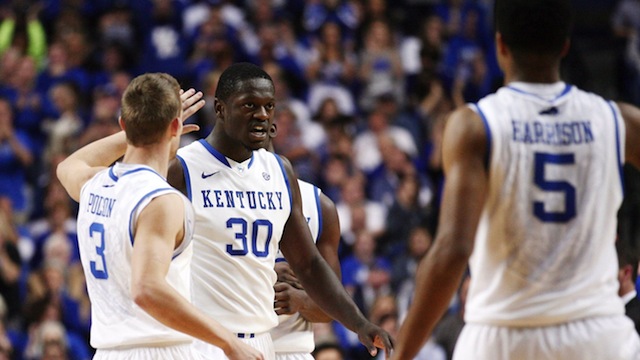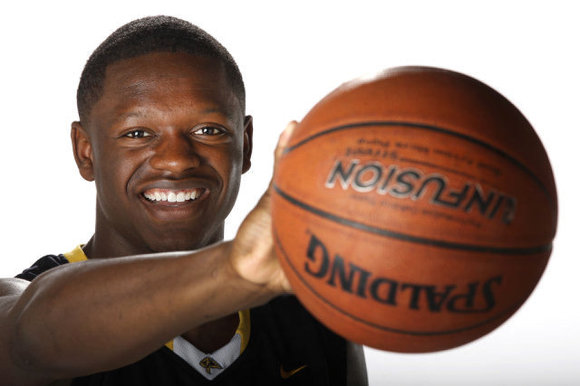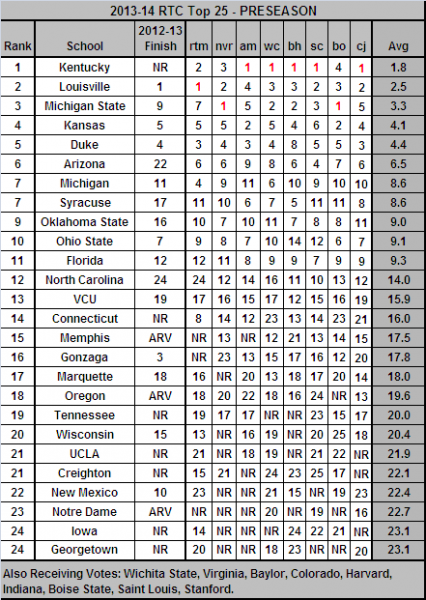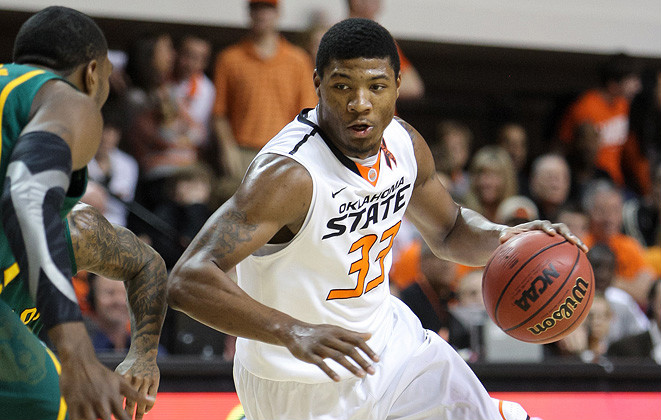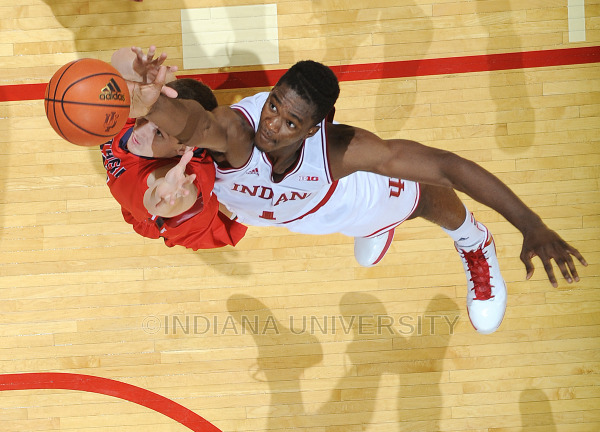Posted by Walker Carey on November 5th, 2013

With the season tipping off Friday night, there’s no better time to roll out our preseason First, Second, and Third All-America Teams. More than anything, these three groups of outstanding players are here to foster and encourage discussion. Our crack panel of eight national columnists provided ballots over the last week or so, and this, perhaps unsurprisingly, is where we ended up.
First Team All-America
 Andrew Wiggins, Kansas (unanimous) – Wiggins begins his career in Lawrence as one of the more ballyhooed freshmen in recent memory. The 6’8″ swingman, who was unanimously considered the top player in the Class of 2013, committed to Kansas in April following a recruiting process that was primarily kept close to the vest. While some of the hype surrounding the dynamic freshman may be a bit overblown, it is impossible to deny Wiggins’ credentials, as he was named 2013 Naismith Prep Player of the Year, 2013 Gatorade National Player of the Year, and Mr. Basketball USA. Wiggins has already acknowledged that he would like to be a one-and-done and enter the 2014 NBA Draft, so it is logical to see why expectations are so high in Lawrence this season.
Andrew Wiggins, Kansas (unanimous) – Wiggins begins his career in Lawrence as one of the more ballyhooed freshmen in recent memory. The 6’8″ swingman, who was unanimously considered the top player in the Class of 2013, committed to Kansas in April following a recruiting process that was primarily kept close to the vest. While some of the hype surrounding the dynamic freshman may be a bit overblown, it is impossible to deny Wiggins’ credentials, as he was named 2013 Naismith Prep Player of the Year, 2013 Gatorade National Player of the Year, and Mr. Basketball USA. Wiggins has already acknowledged that he would like to be a one-and-done and enter the 2014 NBA Draft, so it is logical to see why expectations are so high in Lawrence this season.
Factoid: It is not exactly a surprise that Wiggins is a top-flight athlete when you consider the fact that his father, Mitchell Wiggins, had a lengthy professional basketball career and his mother, Marita Payne-Wiggins, won two silver medals for Canada as a sprinter in the 1984 Summer Olympic Games.
Doug McDermott, Creighton (unanimous) – McDermott’s ability to score from anywhere on the court makes him one of the most feared offensive players in the country. It is rare for a two-time First Team All-American to return to school, but that is the case with McDermott, who spurned the NBA to return for his senior season in Omaha. With Creighton making the big move from the Missouri Valley to the Big East this season, the Bluejays are going to be counting on him to fill the stat line each night out – and McDermott is good enough to come through for them.
Factoid: Due to Creighton guard Grant Gibbs receiving a rare sixth-year of eligibility from the NCAA (and thus, needing a scholarship), McDermott will be an extremely talented walk-on for the 2013-14 season.
Marcus Smart, Oklahoma State – The reigning Big 12 Player of the Year shocked the basketball world when he announced in mid-April that he would return to Stillwater for his sophomore season. The Flower Mound, Texas, native is widely considered the best returning player in all of college basketball. Smart brings a little bit of everything to the floor. His 6’4″ frame is elite for the point guard position and he uses that size as well as any perimeter player in the country. The leadership and intangibles that Smart provides are also second to none. After Oklahoma State finished third in the Big 12 during Smart’s freshman season, it is projected to contend with perennial powerhouse Kansas for the conference crown this season.
Factoid: Making its first NCAA Tournament appearance since 2010, Oklahoma State’s stay in the 2013 event was a short one. The Cowboys, a five-seed, were upset in the Round of 64 by 12-seed Oregon. This loss affected Smart’s decision to return to school, as the setback helped him realize he was not ready to be one-and-done in a Cowboy uniform.
Russ Smith, Louisville – Smith returns to Louisville for his senior season looking to lead the Cardinals to a repeat as national champions. “Russdiculous” is coming off a season that saw him average 18.7 points per game and take home the Most Outstanding Player of the Midwest Regional. While Smith gets a majority of his attention for his performance on the offensive end of the court, he is also a defensive stalwart who keys the relentless full court pressure of the Cardinals. Even though Smith certainly figures to be Louisville’s most explosive player this season, you better believe he will still at times do some things on the court that will drive Rick Pitino crazy.
Factoid: Smith spent his fall interning with WHAS-TV in Louisville, working local high school football games on some Friday nights.
Julius Randle, Kentucky – Kentucky coach John Calipari brought in one of the best recruiting hauls in history for this season and the star of the class is the ultra-athletic Randle. The Plano, Texas, native arrived in Lexington as the second-best prospect in the Class of 2013 – only behind Andrew Wiggins – and early returns on Randle as a Wildcat forward have been overwhelmingly positive. Randle’s talent level is so elite that ESPN‘s Jeff Goodman declared in late September that he would take Randle over Wiggins with the first pick in the 2014 NBA Draft.
Factoid: Randle missed three months of his senior season at Prestonwood Christian due to a fractured foot, but he was able to return in time to lead the school to a Texas state championship.
Read the rest of this entry »
| 2013-14 season preview
| Tagged: aaron craft, Aaron Gordon, adreian payne, Alex Kirk, andrew harrison, Andrew Wiggins, c.j. fair, cleanthony early, Doug McDermott, feature, Gary Harris, glenn robinson iii, Jabari Parker, jahii carson, james young, Joe harris, jordan adams, Julius Randle, Kendall Williams, kevin pangos, lebryan nash, marcus smart, mitch mcgary, Montrezl Harrell, olivier hanlan, P.J. Hairston, perry ellis, rodney hood, russ smith, semaj christon, shabazz napier, spencer dinwiddie, taylor braun
Share this story





























